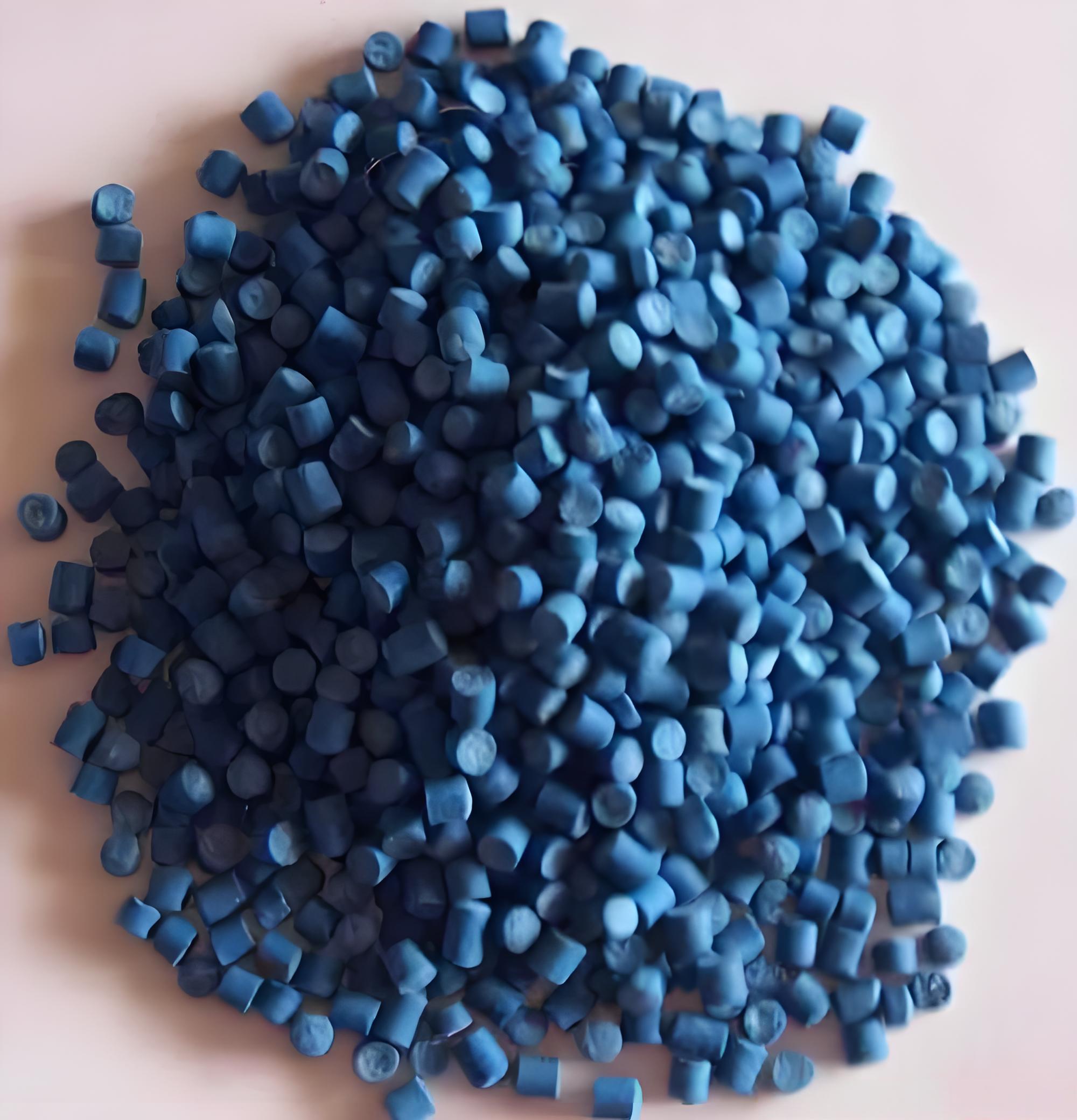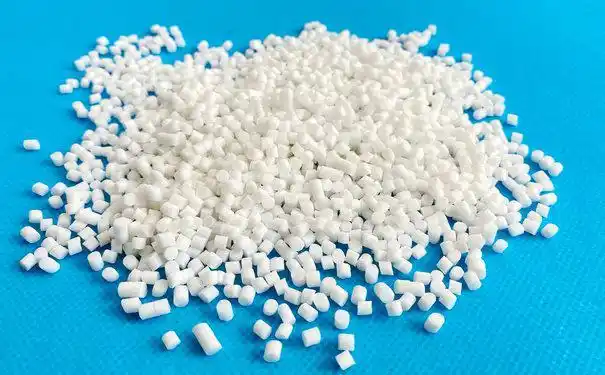Over the years, as I’ve worked with countless materials in product design and manufacturing, TPR (thermoplastic rubber) has always stood out for its versatility. From soft-touch grips to flexible medical tubing, TPR’s rubber-like feel and moldability make it a go-to choice. But there’s a catch I’ve encountered more times than I can count: that frustrating stickiness some TPR products develop. If you’ve ever picked up a TPR phone case or toy and noticed it clinging to your fingers or attracting dust, you’re probably wondering what’s going on. I remember inspecting a batch of TPR shoe soles that felt tacky to the touch, sparking a deep investigation into the issue. In this article, I’ll unravel why TPR elastomer material gets sticky, whether it’s a quality flaw, and how to address it. Whether you’re a consumer, designer, or manufacturer, I’m here to share practical insights to help you navigate this sticky situation.

What is TPR, and Why the Stickiness?
Let’s start with the basics. TPR, or thermoplastic rubber, is a class of elastomers that blends the flexibility of rubber with the processability of plastics. Typically made from styrene-based polymers like SBS (styrene-butadiene-styrene) or SEBS (styrene-ethylene-butylene-styrene), TPR is softened with additives to achieve its characteristic stretch and bounce. You’ll find it in everything from yoga mats to tool handles, prized for its durability and cost-effectiveness.
The stickiness of TPR often stems from its formulation or environmental interactions, where components like plasticizers or degraded polymers create a tacky surface. In my experience, this issue can range from mildly annoying to a serious quality concern, depending on the application. Let’s dive into the reasons behind TPR’s sticky feel and explore solutions to keep your products performing as intended.
Reasons Behind TPR’s Stickiness
1. Plasticizer Migration
The softness of TPR comes from plasticizers, typically oils like mineral or synthetic oils, which reduce the material’s stiffness. Over time, these oils can migrate to the surface, creating a tacky, sticky layer. I’ve seen this most often in lower-cost TPR grades that rely heavily on oil-based plasticizers.
Why it happens: Plasticizers are not chemically bonded to the polymer, so they can seep out, especially under heat or mechanical stress.
Example: A TPR grip I tested felt sticky after a few months because excess mineral oil migrated to the surface.
Pro tip: Opt for TPR with low-migration or polymeric plasticizers to minimize stickiness.
2. Polymer Degradation
Exposure to heat, UV light, or moisture can degrade TPR’s polymer structure, causing the surface to become tacky. This degradation breaks down the polymer chains, releasing sticky byproducts or exposing plasticizers.
Why it happens: Environmental stressors like sunlight or high temperatures accelerate chain scission, altering the material’s surface properties.
Example: TPR car mats I worked with turned sticky after being left in a hot car, as UV exposure degraded the SEBS polymer.
Pro tip: Use UV-stabilized or heat-resistant TPR for outdoor or high-exposure applications.

3. Excess Additives or Poor Formulation
TPR often contains additives like fillers, stabilizers, or processing aids to enhance properties. Overloading with low-quality additives or an unbalanced formulation can lead to surface tackiness, as these components interact unpredictably with the polymer.
Why it happens: Excess fillers (e.g., calcium carbonate) or incompatible stabilizers can destabilize the material, causing stickiness.
Example: A TPR toy I evaluated was sticky due to a high filler content that disrupted the polymer matrix.
Pro tip: Request detailed material specifications to ensure a balanced formulation.
4. Manufacturing Process Issues
The way TPR is processed—through injection molding or extrusion—can contribute to stickiness. Overheating during production or inadequate cooling can alter the material’s surface, trapping volatile components that later create a tacky feel.
Why it happens: High molding temperatures can degrade plasticizers or polymers, while poor cooling leaves residual stresses that promote tackiness.
Example: A batch of TPR seals I inspected felt sticky because the molding process used excessive heat, causing surface changes.
Pro tip: Ensure manufacturers use optimized processing parameters, like controlled temperatures and sufficient cooling.
5. Surface Contamination or Blooming
Sometimes, stickiness isn’t from the TPR itself but from external contaminants or blooming, where additives like waxes or stabilizers migrate to the surface. Dust, grease, or improper handling during production can also make TPR feel tacky.
Why it happens: Contaminants adhere to the soft TPR surface, while blooming occurs when additives crystallize or leach out.
Example: A TPR phone case I handled was sticky due to dust accumulation in a poorly cleaned production environment.
Pro tip: Maintain clean manufacturing conditions and test for blooming during quality control.

Is TPR Stickiness a Quality or Safety Issue?
The tacky feel of TPR can raise concerns, but is it a dealbreaker? From a quality standpoint, stickiness can degrade user experience, making products feel cheap or impractical. For applications like grips or wearable devices, it can reduce functionality by attracting dust or slipping in hand. From a safety standpoint, TPR stickiness is generally harmless, as consumer-grade materials must meet regulations like REACH (Europe) or CPSIA (US). However, sticky surfaces can harbor bacteria or cause skin irritation in sensitive individuals if not cleaned regularly.
Quality impact: Stickiness can lead to customer dissatisfaction, especially in tactile or hygiene-sensitive products.
Safety impact: Low risk for most users, but avoid sticky TPR in food-contact or medical applications unless certified.
My experience: I’ve found that cleaning sticky TPR products can restore functionality, but persistent tackiness often indicates a formulation or processing flaw.
For critical applications, look for certifications like RoHS or FDA compliance and prioritize high-quality TPR to avoid stickiness-related issues.
Comparison of Stickiness Causes and Solutions
Here’s a table summarizing the main causes of TPR’s sticky feel and how to address them:
| Cause | Description | Solution | Prevention |
|---|---|---|---|
| Plasticizer Migration | Oils seep to the surface | Clean with soap, use low-migration TPR | Specify polymeric plasticizers |
| Polymer Degradation | Heat/UV breaks down polymer | Store in cool areas, clean regularly | Use UV-stabilized TPR |
| Excess Additives | Unbalanced fillers/stabilizers | Wipe down, choose balanced TPR | Verify formulation via MSDS |
| Manufacturing Issues | Overheating or poor cooling | Clean surface, air out products | Optimize processing parameters |
| Surface Contamination | Dust or blooming of additives | Wash or wipe, improve production hygiene | Ensure clean manufacturing |
How to Manage or Prevent TPR Stickiness
Drawing from my experience with TPR, here are practical steps to reduce or prevent stickiness, tailored for consumers, designers, and manufacturers:
For Consumers
Clean Regularly:
Wipe TPR products with a damp cloth and mild soap to remove surface oils or contaminants. For stubborn stickiness, use a diluted white vinegar solution, then dry thoroughly.
Example: I kept a TPR keyboard wrist rest tack-free by cleaning it weekly with soapy water.
Pro tip: Avoid harsh chemicals like acetone, which can damage TPR.
Store in Cool, Dry Conditions:
Keep TPR items away from heat sources, direct sunlight, or humid environments to slow plasticizer migration and degradation.
Pro tip: Use ventilated storage containers to prevent trapped moisture or oil buildup.
Apply a Surface Treatment:
Lightly dust non-washable TPR with talc, cornstarch, or baby powder to reduce tackiness. Brush off excess after a few hours.
Pro tip: Test on a small area first to ensure it doesn’t alter the product’s look or feel.

Replace if Persistent:
If stickiness doesn’t improve with cleaning, the TPR may be low-quality or degraded. Consider switching to a higher-grade product.
Pro tip: Look for TPR labeled as “low-tack” or “non-sticky” for future purchases.
For Manufacturers and Designers
Choose Low-Tack Formulations:
Select TPR with low-migration plasticizers (e.g., polymeric or ester-based) or SEBS-based grades, which are less prone to stickiness. Request MSDS for transparency.
Example: I helped a client switch to SEBS-based TPR for medical tubing, eliminating stickiness issues.
Pro tip: Partner with suppliers offering certified low-tack TPR grades.
Optimize Manufacturing Processes:
Control molding temperatures (typically 160-200°C for TPR) to avoid overheating, and ensure adequate cooling to stabilize the material’s surface.
Pro tip: Use post-processing techniques like annealing to reduce surface stresses that cause tackiness.
Balance Additives:
Minimize fillers and stabilizers, and use high-quality, compatible additives to prevent blooming or instability.
Pro tip: Conduct compatibility tests to ensure additives don’t disrupt the polymer matrix.
Test for Surface Tack:
Perform accelerated aging tests (e.g., heat, UV, or humidity exposure) to check for stickiness before production. Use tack testing equipment for precision.
Pro tip: Include surface tack as a quality control metric in your specifications.
Ensure Clean Production:
Maintain a dust-free, grease-free manufacturing environment to prevent contamination. Use clean molds and handle products with care.
Pro tip: Implement post-production cleaning or surface treatments (e.g., plasma coating) to reduce tackiness.

My Personal Experience with TPR Stickiness
A few years ago, I consulted for a company producing TPR handles for fitness equipment. The initial prototypes were noticeably sticky, which was a problem for sweaty hands during workouts. After analyzing the material, we found the issue was a combination of high mineral oil content and overheating during molding. We reformulated the TPR with a low-migration plasticizer and adjusted the processing temperature, resulting in handles that felt smooth and tack-free.
On a personal level, I once owned a TPR mouse pad that became sticky after sitting near a sunny desk for months. Regular cleaning with a soapy cloth helped, but it was a lesson in the importance of storage conditions. These experiences have shown me that TPR stickiness is often preventable with careful material and process control, and manageable with simple fixes for consumers.
Long-Term Considerations
While TPR stickiness can be addressed, there are broader factors to consider:
Material Lifespan: Persistent stickiness may indicate degradation, shortening lifespan. Choose durable TPR grades for long-term applications.
Sustainability: Sticky TPR can complicate recycling due to additive migration. Explore bio-based or recyclable TPR alternatives for eco-friendly options.
Application Fit: Avoid sticky TPR in high-touch, hygiene-critical applications (e.g., medical or food-contact) unless certified for low tackiness.
Frequently Asked Questions
Here are answers to common questions about TPR’s sticky nature, based on my experience:
1. Is TPR stickiness harmful to health?
The sticky residue is generally non-toxic for casual use, as consumer TPR meets safety standards. However, clean sticky surfaces to avoid bacterial buildup or skin irritation.
2. Can I permanently fix sticky TPR material?
You can’t stop stickiness entirely, but regular cleaning, cool storage, and low-tack TPR can keep it minimal. Persistent stickiness may require replacing the product.
3. Why are some TPR products stickier than others?
Low-quality TPR with high oil content or poor formulations is more prone to stickiness. Overheating or environmental exposure also increases tackiness.
4. How do manufacturers reduce TPR stickiness?
Use low-migration plasticizers, optimize molding temperatures, balance additives, and test for tackiness. Clean production environments and proper storage help, too.
5. Can cleaning TPR remove stickiness for good?
Cleaning removes surface tackiness temporarily, but migration or degradation may continue. Regular maintenance is needed for long-term management.

Final Thoughts
The stickiness of TPR elastomer material can be a real annoyance, but it’s a solvable issue tied to plasticizer migration, polymer degradation, or manufacturing choices. By understanding the causes—whether it’s oils seeping out or environmental stress—you can take steps to manage or prevent it. From cleaning and proper storage to selecting low-tack formulations, my time in the materials world has shown me that TPR’s sticky side doesn’t have to be a dealbreaker. Whether you’re a consumer dealing with a tacky TPR product or a manufacturer striving for quality, I hope this guide equips you with the know-how to tackle the issue. Got more questions or need specific tips? I’m all ears—let’s dive deeper into the fascinating world of materials!





